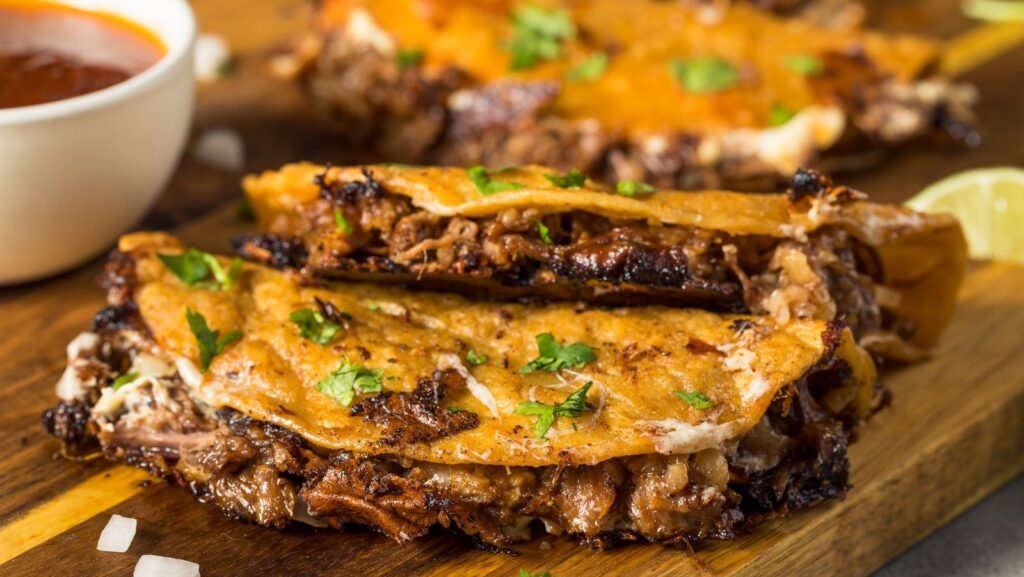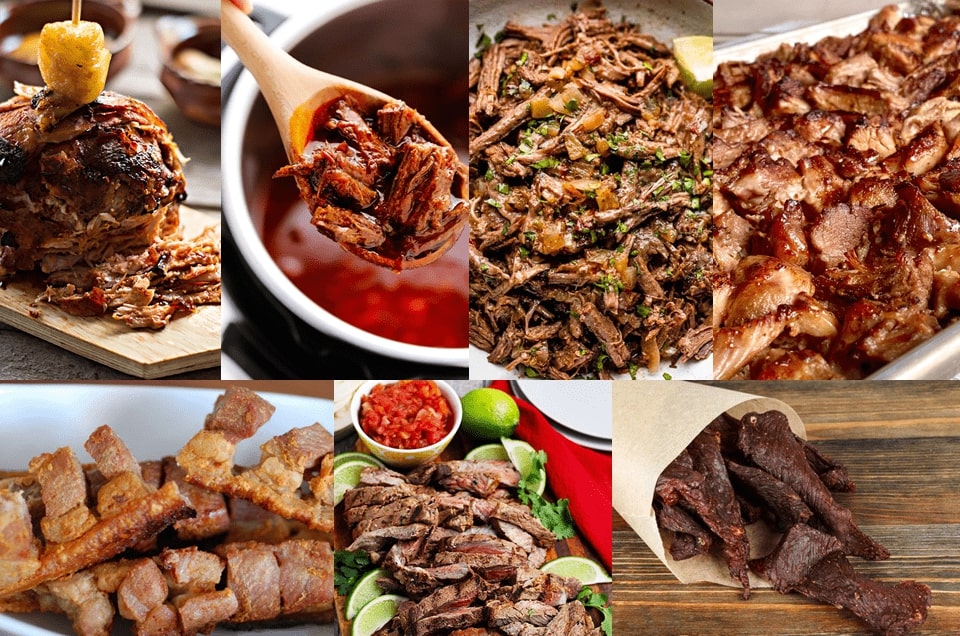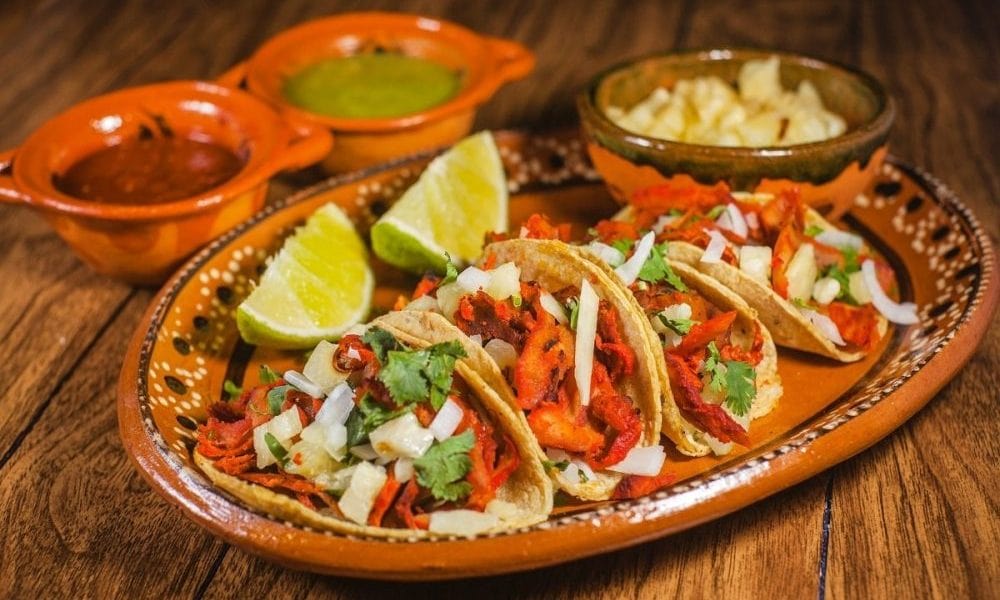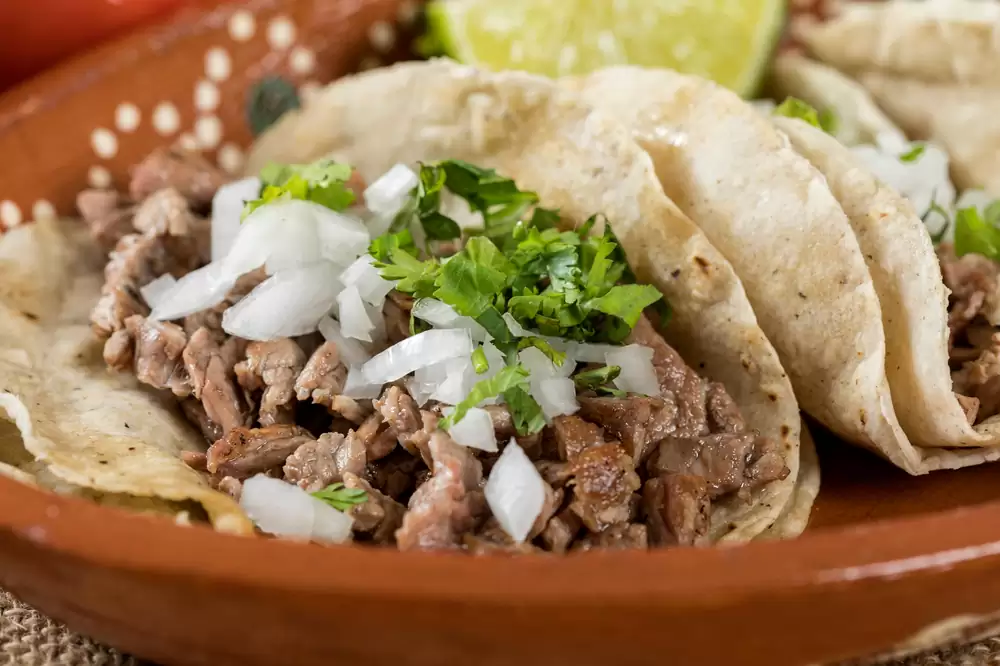Exploring the Rich World of Taco Meat: 10 Mouthwatering Types of Taco Meat
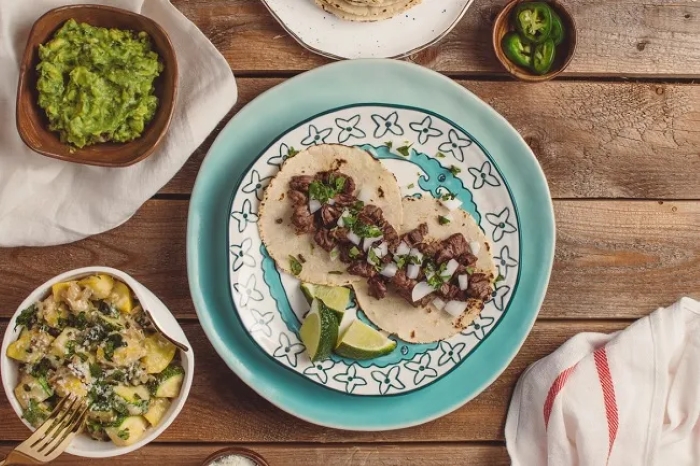
Welcome to a delectable exploration of the wealthy and international Types of taco meat! Tacos, a Mexican culinary treasure, have transcended borders to become an international sensation. In this gastronomic journey, we will resolve the secrets and techniques at the back of ten tantalizing types of taco meat, each boasting its specific records, flavors, and cultural impacts. Beyond the culinary realm, we’ll also contact the quirky linguistic institutions of the phrase ‘taco’ and its multifaceted meanings. From the long-lasting Tacos al Pastor, rooted in Lebanese traditions, to the mouthwatering Cochinita Pibil Tacos hailing from the Yucatan, our journey spans the period and breadth of Mexico’s vibrant culinary tapestry.
So, whether or not you are a seasoned taco fanatic or a curious culinary explorer, be part of us on this flavorful trip as we relish the essence of types of taco meat, one succulent bite at a time. Get geared up for an adventure that tickles your taste buds and immerses you in the cultural mosaic that is Mexican delicacies. ¡Buen provecho!
Here are the best 10 Types of Taco Meat:
Tacos al Pastor:
Origin and History:
- Originating in the 1930s, encouraged the use of Lebanese immigrants in Mexico.
- Culinary fusion of Lebanese shawarma strategies with Mexican flavors.
Ingredients and Preparation:
- Marinated pork on a vertical spit.
- Achiote, guajillo chilies, pineapple, and spices create the signature taste.
Flavor Profile and Popular Pairings:
- A harmonious combo of smoky, sweet, and savory notes.
- Traditionally served on corn tortillas with cilantro, onion, and pineapple.
Tips for Making Tacos al Pastor at Home:
- Marinate red meat in a single day for the choicest flavor.
- Use a vertical spit or oven to copy the conventional cooking method.
- Experiment with condiments to customize your Tacos al Pastor experience.
Tacos Arabes:
Origin and History:
- Originated in the Puebla vicinity, motivated by the aid of Middle Eastern immigrants.
- Emerged in the mid-twentieth century as a fusion of Arabic and Mexican flavors.
Ingredients and Preparation:
- Marinated pork cooked on a vertical rotisserie.
- Served on a flatbread much like pita, showcasing the Middle Eastern effect.
Flavor Profile and Popular Pairings:
- A pleasant blend of nicely seasoned red meat, garlic sauce, and chipotle salsa.
- Often paired with cucumber, onion, and lime.
Tips for Making Tacos Arabes at Home:
- Experiment with marinating beef with the usage of a mix of Middle Eastern and Mexican spices.
- Consider using flatbread or pita for a genuine touch.
- Personalize your toppings to beautify the overall taste.
Cochinita Pibil Tacos:
Origin and History:
- Hails from the Yucatan place with ancient Mayan roots.
- Mayan cooking method includes gradual-cooking marinated pork in banana leaves.
Ingredients and Preparation:
- Achiote paste, citrus juices, and spices create a different marinade.
- Banana leaves are used to wrap the beef before sluggish cooking, resulting in tenderness.
Flavor Profile and Popular Pairings:
- Tangy and citrusy flavor profile.
- Typically served with pickled purple onions and habanero salsa.
Tips for Making Cochinita Pibil Tacos at Home:
- Master the art of marinating with achiote for authenticity.
- Slow-cook the red meat in banana leaves or foil for soft outcomes.
- Experiment with pickled toppings to supplement the tangy taste.
Longaniza Tacos (Chorizo Tacos):
Origin and History:
- Originated in Spain, with Spanish chorizo evolving into Mexican longaniza.
- A spicy and flavorful taco range.
Ingredients and Preparation:
- Longaniza is crafted from ground pork, paprika, garlic, and spices.
- The sausage is crumbled and cooked till crispy.
Flavor Profile and Popular Pairings:
- Bold and highly spiced taste.
- Paired well with diced onions, cilantro, and a squeeze of lime.
Tips for Making Longaniza Tacos at Home:
- Adjust the spice level for your longaniza to suit your taste.
- Consider including precise toppings like avocado or queso fresco for introduced richness.
Suadero Tacos:
Origin and History:
- It originates from Mexico City, known for its use of pork cuts between the belly and leg.
- A famous road meal desire.
Ingredients and Preparation:
- Beef cut from among the stomach and leg is gradual-cooked and thinly sliced.
- Typically pro with a mix of spices.
Flavor Profile and Popular Pairings:
- The best balance of tenderness and flavor.
- Served with onion, cilantro, and salsa verde.
Tips for Making Suadero Tacos at Home:
- Slow-cook dinner the red meat to obtain the preferred tenderness.
- Experiment with distinct salsa verde recipes.
- Customize toppings to your preference for a customized touch.
Carnitas Tacos:
Origin and History:
- Hails from Michoacán, Mexico, with roots in conventional gradual-cooking strategies.
- Historically related to festivals and celebrations.
Ingredients and Preparation:
- Pork shoulder or butt seasoned with citrus, herbs, and spices.
- Slow-cooked till soft with crispy edges.
Flavor Profile and Popular Pairings:
- Savory, barely citrusy taste.
- Commonly paired with diced onions, cilantro, and lime. Salsas and guacamole are famous additions.
Tips for Making Carnitas Tacos at Home:
- Achieve an appropriate stability of tenderness and crispiness through slow cooking.
- Experiment with unique citrus and herb combinations in the marinade.
- Personalize along with your desire for salsas and toppings for a unique twist.
Chicharron Tacos:
Origin and History:
- Transform beef skin, historically discarded, right into a crunchy taco filling.
- Showcases resourcefulness in Mexican cuisine.
Ingredients and Preparation:
- Pork pores and skin deep-fried until crispy.
- Seasoned and frequently simmered in a flavorful sauce before the use of it as a taco filling.
Flavor Profile and Popular Pairings:
- Satisfying crunch with a savory flavor.
- Complemented via salsas, guacamole, and toppings like radishes or cabbage.
Tips for Making Chicharron Tacos at Home:
- Master the artwork of frying beef skin until crispy.
- Experiment with distinctive seasonings and sauces to decorate flavor.
- Customize toppings to your liking for a customized touch.
Tasajo Tacos:
Origin and History:
- Hails from Mexican Avenue meals way of life, celebrating thinly sliced red meat as a taco filling.
- Embraces the artwork of reworking pork into a tasty culinary experience.
Ingredients and Preparation:
- Thinly sliced beef is cured and dried traditionally.
- Rehydrated and cooked earlier than getting used as a taco filling.
Flavor Profile and Popular Pairings:
- Offers a unique beefy taste.
- Commonly paired with salsa, guacamole, and fresh cilantro.
Tips for Making Tasajo Tacos at Home:
- Experiment with the curing process to acquire the preferred texture.
- Explore extraordinary methods to rehydrate and prepare dinner for the foremost flavor of red meat.
- Personalize with various toppings for custom-designed Tasajo Tacos revel in.
Lechon Tacos:
Origin and History:
- Celebrates the joy of roasted pork, deeply embedded in the Mexican lifestyle.
- Traditionally associated with festive occasions and unique gatherings.
Ingredients and Preparation:
- Involves roasting a whole pig until the skin is crispy.
- Succulent and flavorful pork shredded for a taco filling.
Flavor Profile and Popular Pairings:
- Offers a rich and savory taste.
- Paired with tangy salsas, pickled vegetables, and creamy guacamole.
Tips for Making Lechon Tacos at Home:
- While a whole pig roast might not be realistic, gradual-roast red meat shoulder or butt for the same effect.
- Achieve tenderness and crispiness for a balanced texture.
- Personalize with your choice of salsas and toppings for a unique touch.
Barbacoa Tacos:
Origin and History:
- Pays homage to the artwork of gradual-cooking meat underground.
- Rooted in indigenous Mexican culinary practices.
Ingredients and Preparation:
- Typically made with beef, lamb, or goat.
- Slow-cooked in an underground pit or blanketed with maguey leaves.
Flavor Profile and Popular Pairings:
- Offers a succulent and savory taste.
- Paired with fresh lime, cilantro, and salsa for a burst of flavor.
Tips for Making Barbacoa Tacos at Home:
- While an underground pit may not be possible, slow-cook the beef with the usage of an oven or gradual cooker.
- Achieve desired tenderness and taste through sluggish cooking strategies.
- Personalize along with your choice of conventional accompaniments for an actual Barbacoa Tacos revel.
Additional Tips:
- Mix and Match: Don’t be afraid to combine and shape taco fillings. Create your fusion tacos by combining unique types of taco meat in one delicious chunk.
- Homemade Tortillas: Elevate your taco experience by making self-made tortillas. Experiment with corn or flour tortillas to supplement the particular flavors of types of taco meat.
- Salsas Galore: Explore quite a few salsas to accompany your tacos. From mild to highly spiced, fruit-based totally to smoky, one-of-a-kind salsas can enhance the general taste profile of your tacos.
- Fresh Garnishes: Fresh garnishes like chopped cilantro, diced onions, radishes, and lime wedges can add a burst of freshness and texture to your tacos. Customize every taco according to your taste choices.
- Cheese Choices: Experiment with distinctive cheeses to feature creaminess and intensity on your tacos. Queso fresco, cotija, or a blend of Mexican cheeses can complement the savory elements of types of taco meats.
Conclusion:
As we conclude our adventure through the numerous global types of taco meat, we are hoping you are stimulated to embark on your culinary adventure. From the wealthy records of Tacos al Pastor to the savory delights of Barbacoa Tacos, each range offers a unique revel. Expand your taco horizons, attempt those recipes at home, and share the joy of those mouth-watering creations with friends and a circle of relatives. We invite you to comment, proportion your reviews, and be a part of us in celebrating the delicious world of types of taco meat. Happy taco tasting
FAQs:
Q1: What is the starting place of tacos?
Ans: Tacos originated in Mexico, with their roots traced again to indigenous cultures. The phrase ‘taco’ itself approaches ‘light lunch’ or ‘stopper’ in Spanish.
Q2: Are all tacos made with the same types of taco meat?
Ans: No, tacos are available in diverse bureaucracies, and the choice of meat varies. Different regions and cultures in Mexico have their specialties, leading to a large array of taco fillings.
Q3: What is the importance of Tacos al Pastor?
Ans: Tacos al Pastor has historic ties to Lebanese immigrants who introduced the concept of shawarma. This fusion dish, providing marinated red meat cooked on a vertical spit, has grown to be a beloved street meals icon.
Q4: How is Cochinita Pibil organized?
Ans: Cochinita Pibil entails marinating beef in achiote paste, citrus juices, and spices. The meat is wrapped in banana leaves and sluggish-cooked, resulting in a smooth and flavorful filling.
Q5: What distinguishes Longaniza Tacos from other chorizo tacos?
Ans: Longaniza Tacos use a particular type of chorizo known as longaniza. This sausage is crafted from floor pork, paprika, garlic, and spices, giving the tacos a distinct spicy taste.
READ MORE: The Delightful World of Buche Meat: A Culinary Journey

